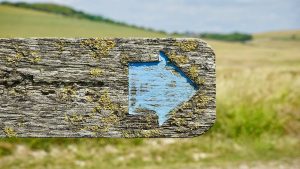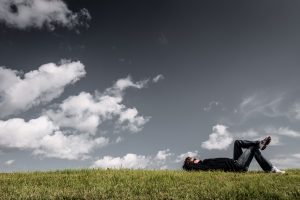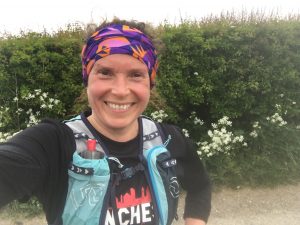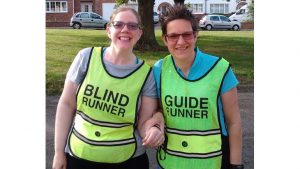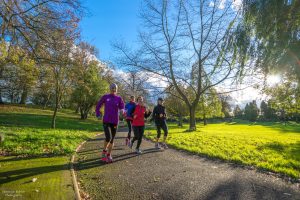Oh joy of joys, here’s another menopausal symptom that might pop up for you. Deep apologies to the gentleman next to me on a long haul flight a few weeks back. I had a bad case of restless legs and despite trying to relax and breathe through the overwhelming urge to move my legs, I didn’t succeed. Random kicks and twitches along with me rotating my feet to try to prevent a DVT, must have made me a nightmare flight companion.
I’ve had restless legs in pregnancy, after some long marathon training runs and now it seems to have come back to party in perimenopause – yay!
So, what are restless legs? Why does this condition happen? And importantly, how can you treat or stop restless legs if you’re affected?
What are restless legs?
There’s a neurological condition called Restless Leg Syndrome (RLS), also known as Willis-Ekbom disease, where you get an overwhelming need to move your legs. You simply can’t keep them still. Your legs can ache, cramp, itch, tickle, fizz, jerk, feel numb, feel as if something is crawling on them or in them and the only way you can resolve it is by moving them. The relief is temporary and the sensation quickly starts again. It’s more common in the evenings and at night. Just as you’re dropping off, it kicks in and can have a big detrimental effect on your sleep.
Sometimes the condition can affect your arms, your trunk or your head.
RLS can be a minor inconvenience from time to time. It can also have a huge impact on everyday life, usually if it’s causing significant sleep deprivation.
Who gets restless legs?
NICE tells us:
- Between five to ten per cent of people have RLS
- It gets more common as you get older
- Over the age of 35, twice as many women have RLS than men
- It’s more common if you’re pregnant.
It’s more likely to happen if you are confined in a space such as in a car or plane and also when you’re in bed at night.
What causes restless legs?
The underlying cause of RLS isn’t fully understood.
RLS can be in your genes, so it might run in your family. Some people have idiopathic RLS which means it comes independently and isn’t linked to another condition.
Because it’s more common in pregnancy, RLS may be linked to hormonal changes.
Iron deficiency (and the way iron is used in the brain even if you aren’t deficient) has been linked to a higher risk of RLS.
RLS is more common in people with depression, anxiety, sleep problems and migraines. This might indicate a brain chemical trigger. We know that dopamine has a role to play here. It’s a tricky area as it can be a chicken and egg situation and hard to know which condition came first.
It’s important to know that RLS a side effect of some of the medications used for depression and anxiety as well as other medications such as anti-histamines and anti-sickness drugs.
Menopause and restless legs
The fact that RLS is more common in pregnancy suggests there could be a hormonal influence. Apparently, the more children you have, the more likely you are to get RLS when you’re older too. Oestrogens are high in pregnancy so if that was the cause, you’d expect it to be less frequent when oestrogen levels fall around the menopause, yet it gets more frequent as you get older. And you’d expect women who are taking HRT to have more RLS but that hasn’t been shown either. It’s more likely to be due to changing and fluctuating hormone levels rather than the absolute levels.
There are also all the RLS linked conditions such as iron deficiency, anxiety, migraine and hypothyroidism which can all be more common around the menopause. Is RLS more common in menopause because these conditions are more common? We don’t have all the answers.
Running and restless legs
Some people experience restless legs after long runs. Over exerting yourself may be a trigger but general day to day running hasn’t been shown to cause RLS, in fact, moderate exercise can help to prevent it. It may be more a case of RLS occurring when you’ve suddenly changed your exercise routine so for example, done a much longer run than usual or abruptly stopped due to injury.
A survey showed that running moderately and consistently is probably the best bet for keeping RLS away. Running in the evening is more likely to trigger symptoms so if you fit in that category switching your run to the morning might help.
Treatments for restless legs syndrome
If you frequently get RLS and/or it’s affecting your everyday life, whether that be through sleep disturbance or the discomfort of it, please do see your doctor. As mentioned here, RLS can be linked to underlying medical conditions and you need to be properly assessed. You may need to have some blood tests to rule out certain conditions or deficiencies.
As always, lifestyle is a hugely important tool for reducing RLS. Menopause is a perfect time to have an honest look at your lifestyle to see what you can change or tweak. Here are some lifestyle factors that might help reduce the frequency or intensity of RLS:
- Reduce your alcohol intake
- Reduce your caffeine intake
- Don’t smoke
- Exercise (run or walk) regularly and consistently, increasing any intensity, duration or frequency gradually rather than suddenly
- Have a walk rather than a run in the evening if you feel your RLS is linked to evening runs.
- Try to maintain good sleeping habits
- Reduce stress levels
- Eat a healthy and varied diet to ensure your body has all the nutrients it needs. Make sure you include plenty of iron-rich foods. It’s also best to avoid too much chocolate.
There are a variety of medications that can be used to help prevent RLS symptoms if you’re experiencing them frequently. All of these need to be prescribed by your doctor after careful consideration as to which will suit your personal situation best. If no benefit is gained or you’re unable to take them, then your doctor may refer you to a specialist.
Visit RLS-UK for lots of tips and support if you struggle with RLS.
How can I ease restless leg symptoms now?
And if an attack strikes and you’re lying there trying to unsuccessfully breathe through the unpleasant sensation in your legs then NICE suggests the following:
- Walk around
- Gently stretch your legs
- Apply a heat pad to your legs or get in a hot bath
- Do some relaxation exercises
- Distract yourself with something; read a book or do a word puzzle
- Massage your legs.
I hope this helps. If you’ve enjoyed it and want more tips on managing your running and menopause then sign up for my newsletter below and I’ll drop them in your inbox every week.
Photo by The Lazy Artist Gallery via Pexels


